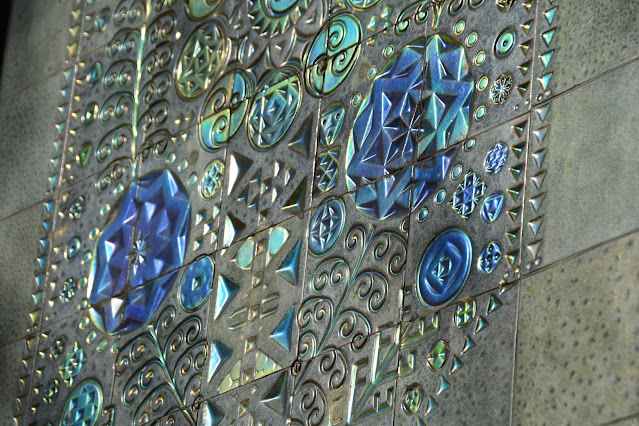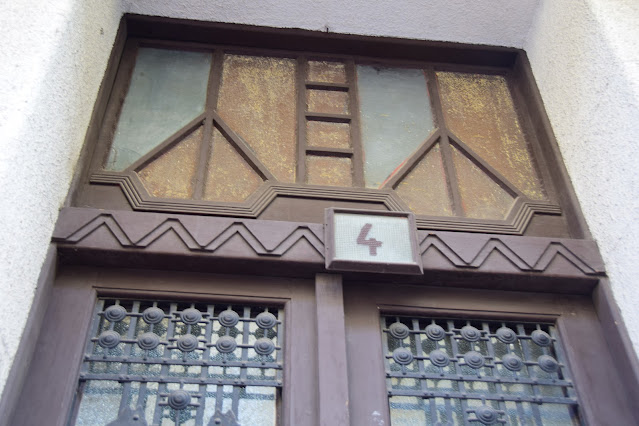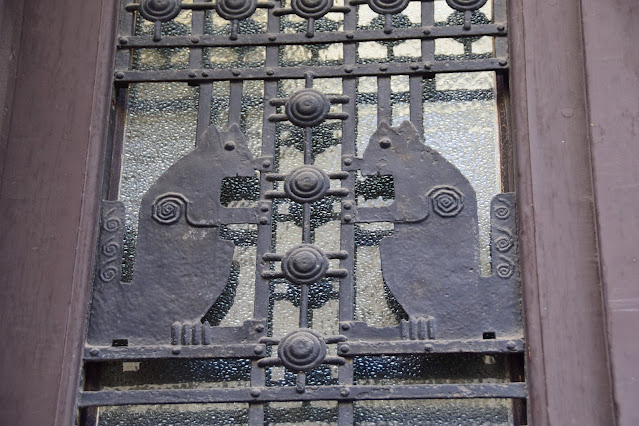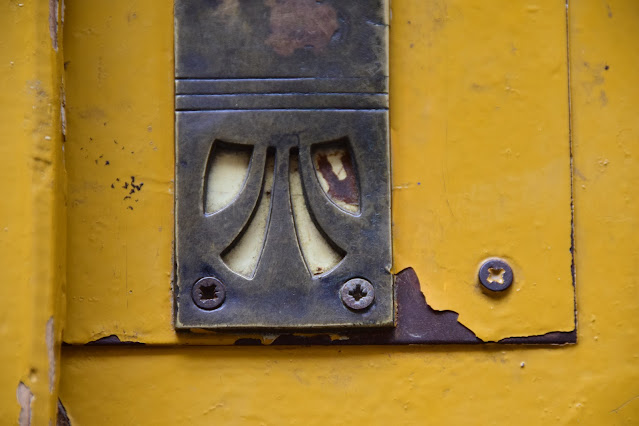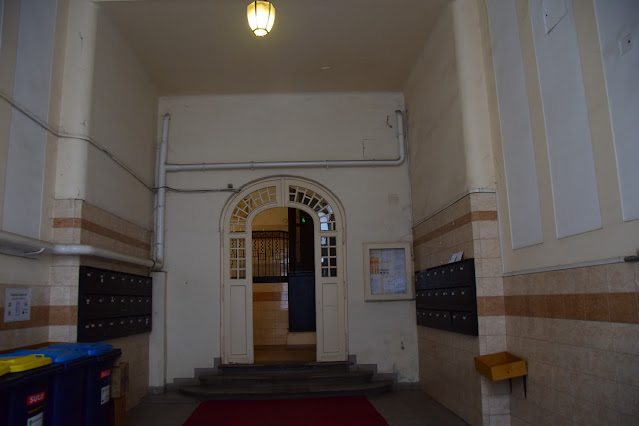You walk along Frankel Leo utca in Buda, where you are told there is a synagogue that is hidden in the building. You pass many nondescript and decaying buildings, until you approach a block that seems a little newer. You reach no. 49 and you notice Jewish signs on the building's exterior.
You peek inside the doors.
A kind woman unlocks the door and you enter a courtyard in which a small synagogue is surrounded by an tenement (apartment) building.
You notice its details.
You watch as the congregants remove the Torah, read it, and return it to the Ark. You watch as the congregation reads the Amidah. You hear the Kaddish. You recognize some of the Hebrew, but it is all said so fast, you miss most of the little that you know. (You do not take pictures, but you try very hard to remember it as well as you can.)
You leave the synagogue. The man explains that the synagogue was built in the 1880s. (You find out it was built in 1888 by Sandor Fellner.) He explains that the tenement building was constructed around the synagogue in the 1920s to hide and protect it. He further explains that the hiding was unsuccessful, as the synagogue was turned into a stable, and many of the inhabitants of the complex were killed in the Holocaust. Now only one apartment has Jewish inhabitants; the rest are Gentiles. He shows you a sign with the names of those who were murdered in the Shoah.
But, he explains, not everyone died. His grandfather survived, as did his mother's family.
You thank the man profusely. You leave. You know you will remember this. It is the only time in eastern Europe where you have been welcomed into a synagogue and people were praying and celebrating Shabbat.
#LeoFrankelUtcaSynagogue
#Budapest


















